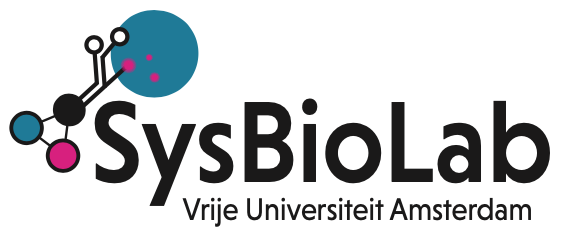Jurgen Haanstra and Bas Teusink collaborated with several research groups on interdisciplinary research combining wetlab experiments with computational models.
Haanstra and Teusink collaborated with research groups in Gothenburg (Sweden), Groningen and Heidelberg (Germany). Their work on a quantitative analysis of amino acid metabolism in liver cancer, with Jurgen as co-first author, was just published in PNAS.
Metabolic changes are a well-known hallmark of cancer, but an integrative view on how metabolic fluxes sustain (high) growth rates is often lacking. In this study the authors used a combination of experimental measurements and computational modelling to understand metabolism of HepG2 liver cancer cells during in vitro growth at different glucose levels. The measured fluxes of glucose, pyruvate, lactate and amino acids during growth were integrated with a genome-scale reconstruction of liver cancer metabolism to estimate the intracellular metabolic fluxes that should be operational to sustain this growth.
The analysis published in PNAS shows that many amino acids are consumed at rates exceeding the need for biomass formation. The intracellular fluxes indicate that a large part of the glutamine that is consumed is metabolised in the cytosol to support biosynthetic processes. A large part of the glutamate that results from these processes is excreted. This led to the hypothesis that inhibition of glutamate export would decrease growth and this was validated in an experiment where glutamate export was inhibited.
The work shows that genome-scale metabolic models constrained with measured fluxes can be used to estimate the effects of inhibitors of metabolic reactions.

Recent Comments